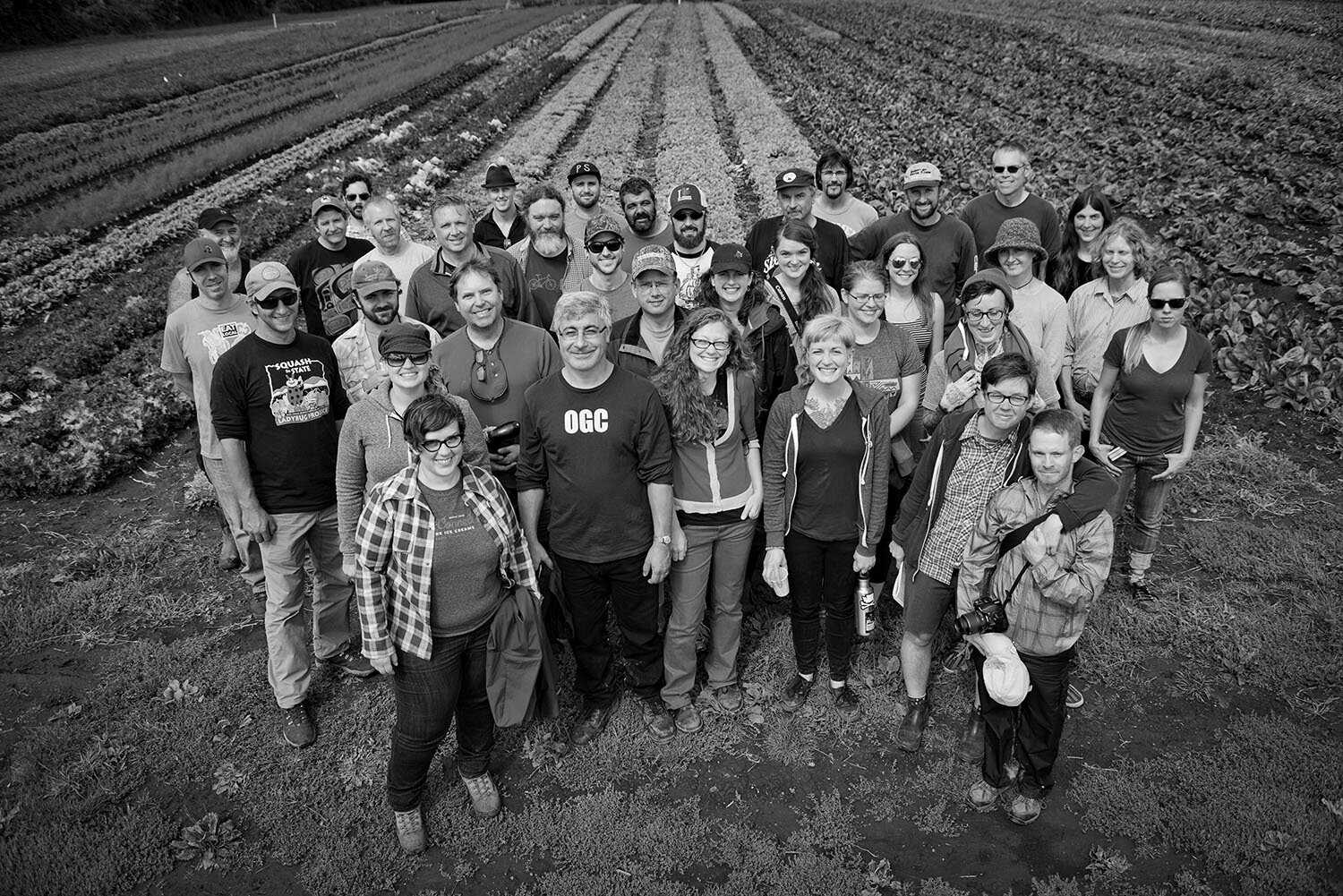PIONEERING A NEW BUSINESS STRUCTURE TO PRESERVE MISSION
On July 9, 2018, Organically Grown Company (OGC) announced its transition from an employee- and grower-owned company to one that will use a groundbreaking new steward ownership structure, a perpetual purpose trust. OGC is one of the first U.S. businesses to use trust law to structure its operational and funding model to support purpose-based entrepreneurship, ownership and succession. The new structure removes the pressure to maximize short-term quarterly profits and exit value for shareholders, and instead allows the company to focus on maximizing purpose — improving health through expanding organic agriculture in the U.S.
“Independence is important to us because we want those who are active in OGC’s initiatives and business efforts to be able to control our destiny and to continue to be active on the causes we care about — transforming food and agriculture toward less destructive practices,” says David Lively, pioneer emeritus and a founding farmer. “Our observation of [mergers and acquisitions] in the trade suggests that selling out could compromise our ability to do that. We founded this business to carry out a mission that is multi-generational; we need our ownership structure to support our mission now and in perpetuity.”
A Mission-Driven Company
Forty years ago, a small group of food activists asked a simple yet profound question: How do we help grow food that is healthier for the planet and people? The answer that emerged: we must create and grow infrastructure and a market for that food.
That small group of activists founded OGC. Driven by a commitment to that founding mission, OGC has grown into a thriving multimillion-dollar business engaged in policy and commerce. Among the largest distributors of organic produce, OCG moved 100 million pounds of fresh fruit and vegetables across the Pacific Northwest region last year. The company has supported the development of third-party standards organizations to market the value of organics and has prioritized investing in production quality and infrastructure to support farmers.
Evolving Governance Structures: From Non-Profit to ESOP
OGC has experimented with several business models during its history. Originally, the company was organized as a nonprofit to help farmers with organic growing methods and education. When the founders realized that the best way to promote organic agriculture would be to help farmers sell their produce, OGC became a grower-owned agricultural marketing co-op. A decade later, driven by a desire to include employees in ownership and sell a broader product line, the company became an S-corporation. However, because an S-corporation can only have a limited number of owners, the firm added an Employee Stock Ownership Plan (ESOP) to support the company’s continued growth while maintaining its social mission.
The Succession Problem
So why change again? About three years ago the company found itself at a crossroads. For decades, OGC had provided liquidity to its farmer- and employee-owners when they retired. For the last 10 years, the ESOP had allowed OGC to fund share repurchases and redistribute the ownership to current employees. But with many founder-owners approaching retirement, the company became concerned about its ability to fund future retirements while also being able to invest in the business and maintain broader mission-related practices.
A New Idea: The Perpetual Purpose Trust
The solution: boldly buy back all the shares from the S-corporation and ESOP and transfer them to the Sustainable Food and Agriculture Perpetual Purpose Trust, an innovative structure designed to protect the company’s economic, social and environmental impact in perpetuity. Eventually, the Trust will hold 100% of the ownership rights, ensuring that the company will never be swallowed up by outside investors or sold to a large competitor that might water down the mission. In addition, by having the Trust hold all of the common stock, it stops the cycle of having to provide ongoing liquidity to common stockholders. (The Internal Revenue Code requires that a company sponsoring an ESOP buy its stock back from participants who receive distributions from the plan.)
To make this transition, OGC partnered with RSF Social Finance, which provided a loan to help buy back shares from OGC’s farmer and employee shareholders. Over time, the Trust will acquire the remaining common stock with capital raised through a private placement of non-voting preferred stock with accredited investors at a rate of return on balance with distributions to other stakeholders (employees, farmers, customers, community).
Moving forward, the new structure allows OGC to reinvest in activities that support its mission of “promoting health through organic agriculture,” and to share profits on an ongoing basis with its multiple stakeholders. At the same time, the company can raise capital through private placement of non-voting preferred stock with accredited mission-aligned evergreen investors who value long-term returns. The Trust, as the controlling common stakeholder, protects the company’s independence by putting all stakeholders in control of the business. This is done by having all stakeholders — employees, farmers, customers, investors, and community allies — elect the Trust Protector Committee.
This type of “steward ownership” structure prevents the business from being sold; profits are a means to an end but not an end itself and are primarily reinvested to serve the mission. Control rights and responsibility lie with the staff who are tasked with producing long-term value rather than immediate financial returns.
“This groundbreaking ownership model embeds OGC’s commitment to organic and sustainable agriculture and corporate, social and environmental stewardship into our governance and financing structure,” says Elizabeth Nardi, company CEO. “Placing the company into a Purpose Trust ensures that we stay focused on our mission as North Star, share real-time rewards with our stakeholders and have aligned financing to increase our impact.”
Originally published on August 8, 2018 on Fifty by Fifty

